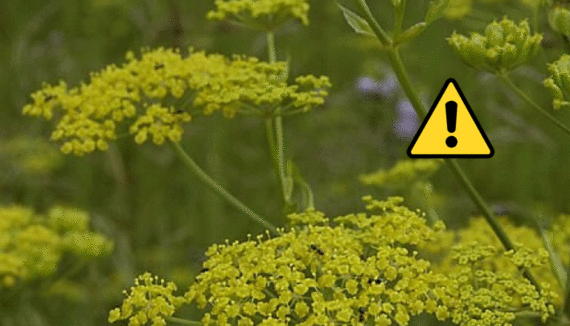|
|
|
Invasive wild
parsnip is blooming now and its yellow flowers resemble those of prairie
parsley, a native prairie plant threatened in Wisconsin. Beware of wild
parsnip: its sap can cause painful skin rashes. Photo courtesy SEWISC
LISTEN TO PODCAST FOR INVASIVE SPECIES CONTROL TIPS
Find out what invasive species to be on the lookout for in
Wisconsin this summer, including wild parsnip, shown here, and get answers to
your questions in this podcast featuring Kelly Kearns, Natural Heritage
Conservation invasive plant coordinator. Kelly joined The Larry Meiller Show on WPR earlier
this month.
HOW TO TELL GIANT HOGWEED FROM COW PARSNIP
The recent discovery in Virginia of giant hogweed
has garnered national headlines and triggered lots of calls to DNR.
Giant hogweed has a toxic sap that can cause burns and blisters. Wisconsin
has about nine sites in four counties with giant hogweed; one site is
reported to be eradicated. Most citizen reports to DNR have turned out to be
cow parsnip. See a side-by-side comparison. If you still think
you have seen hogweed, please send photos and other details to invasive.species@wi.gov.
"INVADER CRUSADERS" HONORED
Wisconsin citizens, organizations and natural resource
professionals who have made significant contributions to the
identification, prevention, and control of invasive species in Wisconsin
were recognized at a June ceremony in Madison. See these
worthy award winners and learn why invasive species month is
changing its name from stressing awareness to action. Read now.
|
Thursday, June 28, 2018
CHECK THIS OUT, IF YOU SEE IT, DESTROY IT, BUT PLEASE BE CAREFUL DOING SO.
Subscribe to:
Post Comments (Atom)



No comments:
Post a Comment